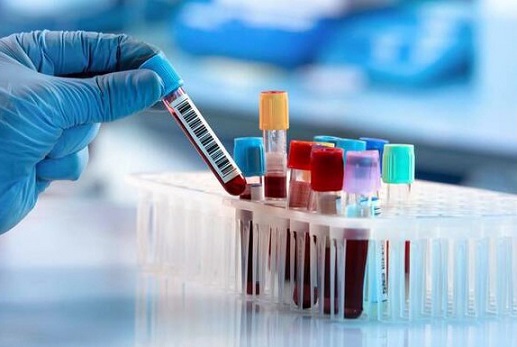Nikhil Prasad Fact checked by:Thailand Medical News Team Nov 17, 2024 1 year, 1 month, 1 week, 44 minutes ago
Medical News: Gliomas are the most common type of malignant brain tumors, accounting for a significant proportion of central nervous system cancers. These tumors originate in glial cells, which provide structural and functional support to neurons. Gliomas are graded based on their aggressiveness, ranging from low-grade (grades I and II) to high-grade (grades III and IV), such as glioblastoma multiforme (GBM), which is notorious for its invasiveness and poor prognosis.
 CLIC4 Expression Sheds Light on Glioma Prognosis and Immune Response
CLIC4 Expression Sheds Light on Glioma Prognosis and Immune Response
Recent research by scientists from the Renmin Hospital of Wuhan University, China, has revealed a novel biomarker, Chloride Intracellular Channel 4 (CLIC4), that may play a critical role in glioma progression and prognosis. This
Medical News report delves into their groundbreaking findings, exploring the connection between CLIC4 expression, tumor behavior, and immune responses.
Understanding the Study and Key Findings
The researchers analyzed data from 3,162 glioma samples across nine public datasets, supplemented with 56 glioma and 12 non-tumor brain tissue samples. This comprehensive analysis revealed that higher levels of CLIC4 expression were associated with more aggressive gliomas and poorer patient outcomes.
Interestingly, gliomas with favorable genetic mutations, such as IDH mutations and 1p19q codeletions, exhibited lower levels of CLIC4 expression. These findings suggest that CLIC4 might serve as a reliable biomarker to predict glioma prognosis.
Immunohistochemical (IHC) staining confirmed these observations, showing significantly higher CLIC4 levels in high-grade gliomas compared to low-grade gliomas or normal brain tissue. In particular, the mesenchymal subtype of glioblastoma displayed the highest CLIC4 expression, correlating with increased tumor aggressiveness and resistance to therapy.
The Role of CLIC4 in Immune Infiltration and the Tumor Microenvironment
One of the most intriguing aspects of this study is the relationship between CLIC4 expression and immune cell infiltration within gliomas. High CLIC4 expression was linked to increased presence of immune cells, including macrophages, neutrophils, and eosinophils, which are often associated with inflammation and tumor progression. Conversely, CLIC4 expression negatively correlated with plasmacytoid dendritic cells (pDCs) and regulatory T cells (Tregs), both known for their immunosuppressive roles.
Functional enrichment analyses further revealed that gliomas with high CLIC4 expression were enriched in pathways related to cytokine signaling, immune response, and extracellular matrix (ECM) organization. The ECM, a network of proteins that provides structural support to cells, plays a vital role in tumor invasion and metastasis. CLIC4’s association with ECM-related genes, such as VIM, MMP1, and COL1A1, underscores its importance in shaping the tumor microenvironment.
Prognostic Implications and the Nomogram Model
To assess the prognostic
value of CLIC4, the researchers developed a nomogram model incorporating CLIC4 expression, patient age, tumor grade, and IDH mutation status. The model demonstrated strong predictive performance for 1-, 3-, and 5-year survival rates. Patients with higher CLIC4 levels had significantly worse survival outcomes, regardless of glioma grade.
This model represents a significant advancement in personalized medicine, offering clinicians a practical tool to predict glioma outcomes and tailor treatment strategies accordingly.
Broader Implications of CLIC4 Research
The study also highlights the dual nature of CLIC4 in cancer biology. While it has been implicated in promoting tumor growth in some contexts, its role can vary depending on the tumor type and microenvironment. For instance, in gliomas, high CLIC4 expression is associated with poor outcomes, but in other cancers, such as colorectal cancer, its function might differ.
The findings open new avenues for therapeutic interventions targeting CLIC4. By modulating its expression or activity, it might be possible to alter the tumor microenvironment, inhibit tumor progression, and enhance the efficacy of existing treatments.
Conclusion
This study establishes CLIC4 as a key player in glioma biology, linking its expression to tumor aggressiveness, immune response, and ECM dynamics. Gliomas with high CLIC4 expression exhibit greater malignancy and worse prognoses, emphasizing the potential of CLIC4 as a biomarker and therapeutic target.
As research progresses, a deeper understanding of CLIC4’s molecular mechanisms could pave the way for novel treatments that improve outcomes for glioma patients.
The findings were published in the peer-reviewed journal: Biomedicines.
https://www.mdpi.com/2227-9059/12/11/2579
For the latest on Gliomas, keep on logging to Thailand
Medical News.
Read Also:
https://www.thailandmedical.news/news/biomarkers-in-spinal-fluid-can-help-diagnose-and-monitor-brain-tumors
https://www.thailandmedical.news/news/ai-news-china-unveils-new-ai-platform-that-can-classify-diffuse-gliomas-rapidly-and-accurately-to-enable-timely-treatment-of-specific-brain-cancers
https://www.thailandmedical.news/news/unlocking-the-potential-of-liquid-biopsies-in-glioblastoma-diagnosis-and-treatment
